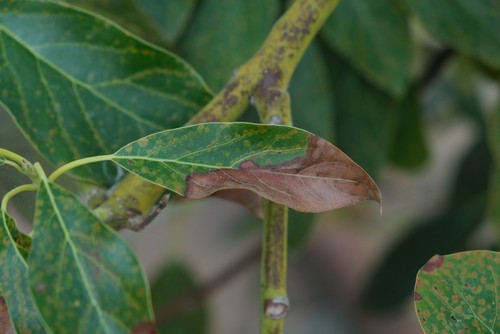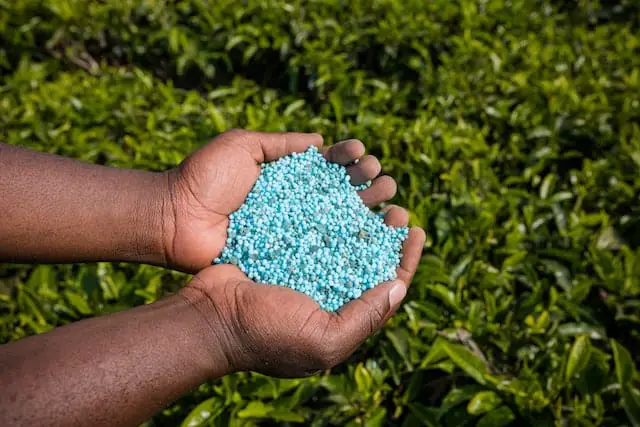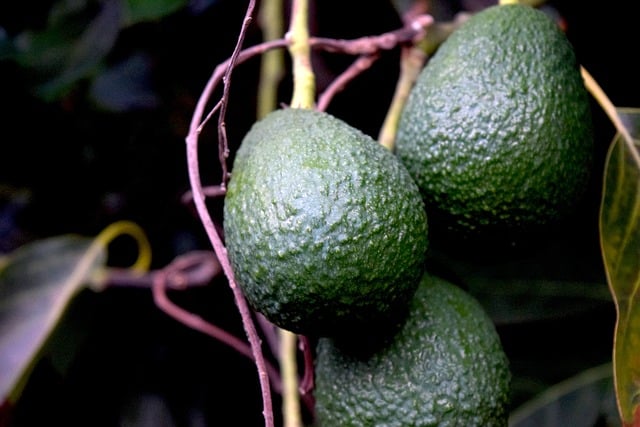Avocado plants are known for their lush green leaves and delicious fruits. However, sometimes avocado plants can develop drooping leaves, which can be a cause for concern for many gardeners. There are several reasons behind avocado plant drooping leaves, including overwatering, underwatering, root issues, and other leaf problems.
Understanding the causes of avocado plant drooping can help gardeners take the necessary steps to address the issue and prevent it from occurring in the future. Proper avocado tree care is essential to ensure that the plant remains healthy and productive.
This includes regular watering, fertilizing, and pruning, as well as monitoring the plant for signs of stress or disease.
Whether you’re growing avocado plants indoors or outdoors, it’s important to pay attention to the health and well-being of your plant. By addressing root issues, leaf problems, and other potential causes of drooping leaves, you can help your avocado plant thrive and produce delicious fruits for years to come.
Key Takeaways
- Drooping avocado leaves can be caused by overwatering, underwatering, root issues, and other leaf problems.
- Proper avocado tree care, including regular watering, fertilizing, and pruning, can help prevent drooping leaves.
- Whether growing avocado plants indoors or outdoors, monitoring plant health is essential for ensuring a healthy and productive plant.
Also see:
Understanding Avocado Plant Drooping

Avocado plants are popular among gardeners for their delicious fruit, but they can be finicky when it comes to growing conditions. One common issue that avocado plant owners face is drooping leaves. Understanding the causes and signs of drooping leaves can help prevent further damage to the plant.
Avocado Plant Drooping Leaves – 5 Common Problems
There are several reasons why avocado plants may have drooping leaves. Here are some of the most common causes:
- Overwatering: Avocado plants are susceptible to root rot, which can be caused by overwatering. When the roots are damaged, the plant can’t absorb water and nutrients properly, leading to drooping leaves.
- Underwatering: On the other hand, if the plant is not getting enough water, the leaves may droop as a way to conserve water.
- Transplant shock: When avocado plants are transplanted, they can experience shock, which can cause the leaves to droop. This is especially true if the plant was not watered properly after being transplanted.
- Temperature stress: Avocado plants prefer temperatures between 60 and 80 degrees Fahrenheit. If the temperature is too hot or too cold, the leaves may droop.
- Pest infestation: Some pests, such as spider mites and thrips, can cause damage to the leaves and make them droop.
Signs of Drooping Leaves
Drooping leaves are a clear sign that something is wrong with the avocado plant. However, it’s important to look for other signs to determine the cause of the drooping. Here are some things to look for:
- Yellowing leaves: If the leaves are yellowing in addition to drooping, it may be a sign of overwatering or root rot.
- Dry soil: If the soil is dry and the leaves are drooping, the plant may be underwatered.
- Mushy roots: If the roots are mushy and black, it may be a sign of root rot.
- Pest damage: Look for signs of pest damage, such as small holes in the leaves or webbing.
Avocado Tree Care
1. Watering and Soil Moisture
Proper watering is essential for the health of avocado trees. Overwatering can lead to root rot and drooping leaves, while underwatering can cause the leaves to dry out and fall off. Avocado trees prefer loose, loamy soil with a pH of 5-7. If the soil isn’t loose, then it’s likely not draining well and the plant is getting over-watered.
To avoid overwatering, water your avocado tree only when the soil is dry up to two inches. If the soil is still moist, wait a few more days before watering again. On the other hand, if the soil is too dry, the leaves will start to curl and turn brown. To maintain the right soil moisture level, consider using a moisture meter to check the soil before watering.
2. Sunlight and Shade Requirements
Avocado trees need plenty of sunlight to grow and produce fruit. They prefer full sun but can tolerate some shade. However, a lack of sunlight can cause the leaves to droop and fall off. If your avocado tree is not getting enough sunlight, consider moving it to a sunnier spot.
3. Nutrient and Mineral Needs

Avocado trees require a balanced mix of nutrients and minerals to grow and produce fruit. Nitrogen, phosphorus, and potassium are the primary nutrients needed for avocado tree growth. To provide these nutrients, consider using a balanced fertilizer formulated specifically for avocado trees.
4. Proper Pot Size and Repotting
Choosing the right pot size is crucial for the growth and health of avocado trees. A pot that is too small can restrict root growth and cause the leaves to droop. A pot that is too large can cause the soil to retain too much moisture, leading to root rot.
When repotting, choose a pot that is one size larger than the current pot. Make sure the new pot has plenty of drainage holes and add a layer of gravel at the bottom of the pot so that the water can drain away from the roots. Repotting should be done every two to three years or when the roots have outgrown the current pot.
By following these simple avocado tree care tips, you can help ensure that your tree stays healthy and produces delicious fruit for years to come.
Dealing with Root Issues
Avocado trees are sensitive and can be prone to root issues that cause drooping leaves. Understanding root rot and poor drainage can help prevent and treat these issues.
Understanding Root Rot
Root rot is a common issue for avocado trees. It occurs when the roots are constantly wet, which can happen if the tree is planted in soil that doesn’t drain well or if it’s overwatered. The roots become waterlogged and start to rot, which can cause the tree to wilt and drop leaves.
There are two main types of root rot that affect avocado trees: Phytophthora and oak root fungus. Phytophthora is a water mold that thrives in wet soil and can be difficult to control. Oak root fungus, on the other hand, is a soil-borne fungus that can survive for years in the soil even without a host plant.
Fixing Poor Drainage
One of the main causes of root rot is poor drainage. To fix this issue, make sure your avocado tree is planted in soil that drains well. If the tree is planted in a pot, make sure it has drainage holes and add gravel, perlite, or vermiculite to the soil mix to improve drainage.
If the soil around your avocado tree is constantly wet, you may need to improve drainage by creating a drainage system. This can be done by digging a trench around the tree and filling it with gravel or other porous material to help water drain away from the roots.
Another way to improve drainage is to water the tree less frequently. Avocado trees prefer moist soil, but they don’t like to be waterlogged. Allow the soil to dry out slightly between waterings to prevent overwatering and root rot.
Addressing Leaf Problems

When avocado tree leaves start drooping or yellowing, it can be a sign of a problem. Addressing the issue quickly can help prevent further damage to the plant and ensure that it continues to produce healthy fruit. Here are some steps to take to address leaf problems in avocado trees.
1. Dealing with Pests
One common cause of drooping avocado leaves is pests. Mites and mealybugs are two common pests that can infest avocado trees. If you suspect that pests are the cause of the problem, inspect the leaves and stems for signs of infestation.
Look for small, white bugs or webs on the leaves. If you find evidence of pests, treat the tree with an appropriate pesticide. Be sure to follow the instructions on the label carefully and avoid spraying the fruit.
2. Managing Diseases
Diseases can also cause avocado leaves to droop or turn yellow. Two common diseases that affect avocado trees are anthracnose and verticillium wilt. Anthracnose is a fungal disease that causes brown spots on the leaves and fruit.
Verticillium wilt is a soil-borne disease that causes yellowing and wilting of the leaves. If you suspect that your tree has a disease, it is important to identify the specific disease and treat it accordingly. Consult with a local nursery or extension office for guidance on how to manage the disease.
3. Pruning
Pruning can also help address leaf problems in avocado trees. Pruning can help improve airflow and light penetration, which can help prevent diseases and pests. Use pruning shears to remove any dead or damaged branches, as well as any branches that are growing too close together.
Be sure to sterilize the pruning shears between cuts to prevent the spread of disease.
4. Foliage Care
Finally, taking good care of the foliage can help prevent leaf problems in avocado trees. Be sure to provide the tree with adequate water and nutrients, and avoid over-fertilizing. Avocado trees are sensitive to sunburn, so it is important to provide them with some shade during the hottest part of the day.
If the tree is growing in a container, be sure to repot it every few years to ensure that it has enough room to grow.
By taking these steps to address leaf problems in avocado trees, you can help ensure that your tree continues to produce healthy fruit for years to come.
Indoor Avocado Plant Care

Growing avocado plants indoors is a great way to enjoy fresh and nutritious avocados right from the comfort of your own home. However, it’s important to take proper care of your avocado plant to ensure it stays healthy and produces delicious fruit. In this section, we’ll cover some important aspects of indoor avocado plant care.
Choosing the Right Potting Mix
Choosing the right potting mix is crucial for the health of your indoor avocado plant. A good potting mix should provide adequate drainage and aeration while also retaining moisture. Look for a potting mix that is specifically formulated for indoor plants and contains ingredients like peat moss, perlite, and vermiculite.
It’s also important to choose a pot that is the right size for your avocado plant. A pot that is too small can cause the roots to become crowded and stunted, while a pot that is too large can retain too much moisture and lead to root rot. Choose a pot that is just slightly larger than the root ball of your avocado plant.
Managing Temperature and Climate
Avocado plants thrive in warm and humid environments, so it’s important to keep your indoor avocado plant in a location that receives plenty of sunlight and has a consistent temperature between 60 and 85 degrees Fahrenheit.
If your home is particularly dry, you may want to consider using a humidifier to help maintain the proper humidity levels for your avocado plant.
If you live in a colder climate, you may need to use a grow light to provide your avocado plant with the necessary amount of light. Look for a grow light that provides full-spectrum light and can be adjusted to different heights to accommodate the growth of your avocado plant.
Conclusion
In conclusion, drooping leaves in avocado plants can be caused by a variety of factors. The most common cause is overwatering, which can lead to root rot and other fungal diseases. Underwatering can also cause drooping leaves, so it is important to monitor the soil moisture and water accordingly.
Another possible cause of drooping leaves is transplant shock, which can occur when the plant is moved to a new location or repotted. This can be mitigated by gradually acclimating the plant to its new environment and avoiding disturbing the roots as much as possible.
In addition to watering and transplant shock, lack of sunlight and nutrient deficiencies can also cause drooping leaves in avocado plants. It is important to provide adequate sunlight and a balanced fertilizer to promote healthy growth and prevent drooping leaves.
Overall, avocado plants are relatively easy to care for as long as their basic needs are met. By monitoring soil moisture, providing adequate sunlight, and fertilizing appropriately, growers can prevent drooping leaves and promote healthy growth in their avocado plants.
Frequently Asked Questions

How can I fix drooping avocado plant leaves?
The first step to fixing drooping avocado plant leaves is to determine the cause. If the soil is dry, water the plant thoroughly and add mulch to help retain moisture. If the soil is too wet, allow it to dry out before watering again. Ensure that the plant is getting enough sunlight and is not exposed to cold temperatures. Prune any dead or damaged leaves to encourage new growth.
What causes avocado plant leaves to droop?
The most common cause of drooping avocado plant leaves is under or overwatering. Other factors that can cause drooping leaves include poor drainage, lack of sunlight, pests, diseases, and transplant shock.
Why are my indoor avocado plant leaves wilting?
Indoor avocado plants can wilt due to a lack of humidity, over or underwatering, or exposure to extreme temperatures. Ensure that the plant is getting enough sunlight and consider using a humidifier to increase the humidity level in the room.
What are the signs of an overwatered avocado plant?
Signs of an overwatered avocado plant include yellowing leaves, root rot, and a foul odor. The soil may also be soggy or waterlogged.
When do avocado trees typically lose their leaves?
Avocado trees typically lose their leaves in the fall or winter months. However, if the tree is experiencing stress due to factors such as disease, pests, or extreme weather conditions, it may lose its leaves at other times of the year.
Why are the leaves on my avocado tree turning brown and drooping?
Brown, drooping leaves on an avocado tree can be a sign of over or underwatering, nutrient deficiency, pests, or disease. Check the soil moisture level and adjust watering accordingly. Fertilize the tree with a balanced fertilizer and treat any pests or diseases promptly.

Hey, I’m Lisa and I’ve been an avid gardener for over 30 years. I love writing, talking and living in the garden! Feel free to connect with me on my socials below

